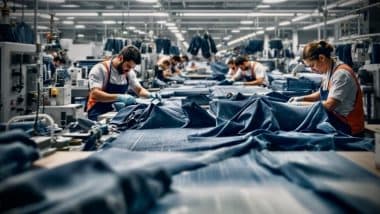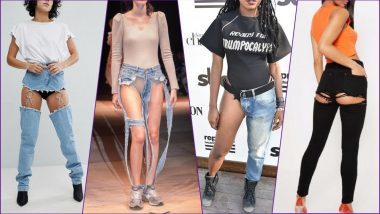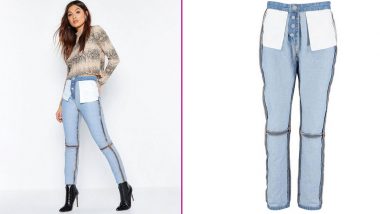Every garment has a detailed production process that contributes to its quality. Creating a good pair of jeans requires significant care and attention throughout various stages. From weaving and fabric washing to sewing and fitting on diverse body types, each phase includes crucial quality control points. Effective communication with suppliers is essential; when all parties align with the same quality standards, the outcome can be exceptional.슬롯 머신 사이트 추천Nauvari Saree 슬롯사이트“ a Nine-Yard Embodiment of Feminine Bravery, Spirituality, and Rich Cultural Significance.슬롯 머신 사이트 추천
Many brands, like Pepe Jeans, benefit from having dedicated internal technical teams. These specialised pattern makers focus full-time on fits and sizing, which is a distinct advantage and greatly impacts the final product. For fashion-forward consumers, it슬롯사이트™s vital to understand how denim items are produced. A best practice is to always verify the origin of materials on the care label; a lack of information often raises concerns about quality.슬롯 머신 사이트 추천Summer슬롯사이트™s Favourite 슬롯사이트“ White Tank Tops.슬롯 머신 사이트 추천
While the country of production can offer some insights, it's the manufacturing process that truly matters. Certain countries, such as Japan and Italy, are noted for their craftsmanship, but even within those regions, inconsistencies can occur. The quality ultimately hinges on the attention given to the manufacturing process.
Explore how each pair is expertly made, ensuring style, durability, and comfort in every stitch.
Weaving the Yarn
The journey begins with the fabric, typically made from cotton. This raw cotton is spun into yarn, which is then woven into fabric. Clothing manufacturers procure this fabric from carefully selected suppliers. Typically, denim is composed of two types of yarn: an indigo-dyed yarn (the warp) and a white yarn (the weft), creating the characteristic denim weave. Variations can exist in structure, color, and type of weave.
Once the fabric arrives on large rolls, it is essential to 슬롯사이트˜relax 슬롯사이트™it슬롯사이트”unrolling and airing the fabric helps to mitigate shrinkage and distortion during cutting. Each roll may vary slightly in color, yarn, or shrinkage percentages.
Cutting and Sewing
After the fabric has relaxed, it is stacked in layers and cut into individual parts of the jeans, such as the legs, waistband, and pockets. Each pattern piece is labelled to guide factory workers in the assembly process. In the sewing department, these pieces are meticulously brought together by specialists, with each worker focusing on a specific task슬롯사이트”for instance, one might attach pockets while another constructs the fly. In smaller factories, it is common for one worker to handle multiple steps, while larger factories tend to optimize the workflow through task specialization.
The Dry and Wet Treatments
Post-sewing, jeans undergo various dry processing treatments, such as sanding or applying wear marks. Traditionally, this was done by hand using sandpaper on a mannequin, but many factories have evolved to utilize advanced technologies that simulate worn effects without water or chemicals. For example, one factory in Tunisia employs a robot to hang the jeans, utilize lasers for distressing, and reintegrate them into the assembly line슬롯사이트”an impressive display of automation.
Subsequently, the jeans enter the 슬롯사이트˜wet 슬롯사이트™processing phase, which involves washing. Chemical treatments like bleaching or potassium permanganate lighten the denim, and traditional stonewashing슬롯사이트”adding pumice stones to the wash cycle슬롯사이트”creates a lighter color. Recently, many manufacturers have transitioned to more eco-friendly alternatives for this process.
Historically, producing a single pair of jeans could require up to 7,000 liters of fresh water. Now, with advancements in technology, water can be recycled and purified within specialized factory systems. While it may not be potable, this recycled water is repurposed for future production. Other innovative techniques, such as e-flow technology (which employs air instead of water) and ozone machines, enable manufacturers to clean denim without harmful substances.
Final Step: Finishing and Packaging
Once the washing process is complete, the jeans undergo a thorough quality check before packaging. This careful attention to detail ensures that each pair meets the high standards expected by consumers.
Manufacturers are continually pushing the envelope, especially in terms of sustainability and efficiency. Companies like Jeanologia and Tonello are pioneering sustainable washing and finishing techniques, and they are committed to discovering new methods that reduce environmental impact.
(The above story first appeared on LatestLY on May 02, 2025 01:57 PM IST. For more news and updates on politics, world, sports, entertainment and lifestyle, log on to our website latestly.com).













 Quickly
Quickly



















